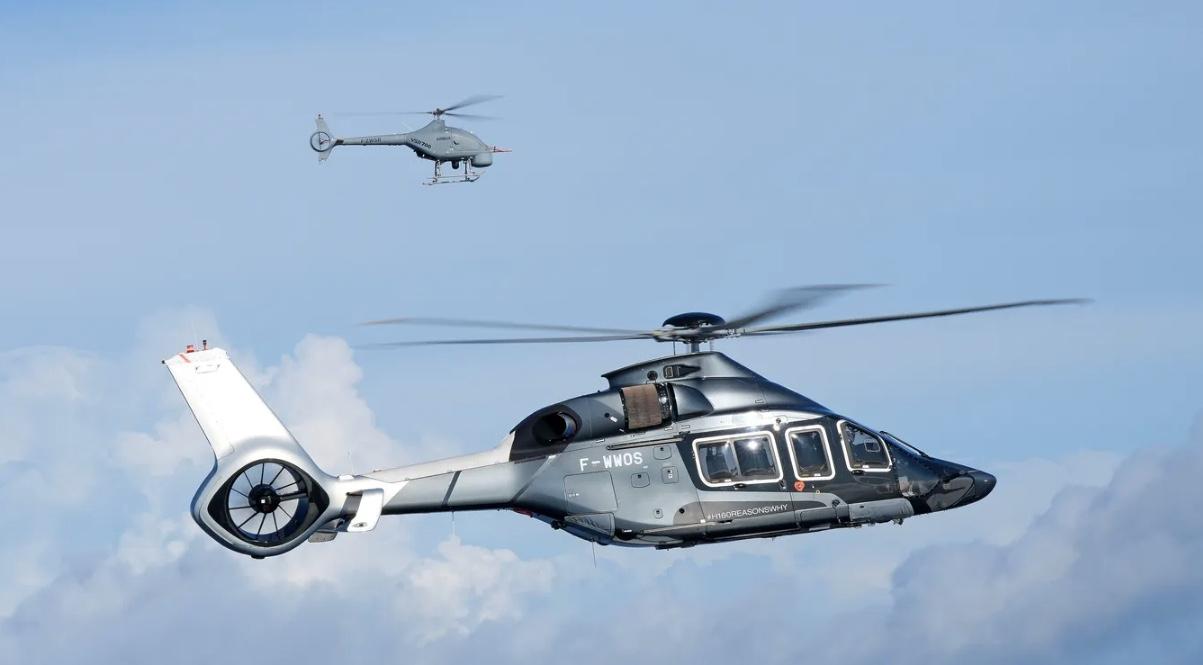Airbus Helicopters is taking a bold step toward redefining aerial operations through its crewed–uncrewed teaming (CUMT) strategy — a programme that brings manned helicopters and uncrewed aerial systems (UAS) into seamless collaboration. The goal is simple yet transformative: to multiply mission capability and operational flexibility across defence, civil, and parapublic sectors.
“Crewed–uncrewed teaming will be a capability-driven activity to enhance the effectiveness of our helicopters,” said Victor Gerin-Roze, Head of UAS Business at Airbus Helicopters. “Our plan is incremental — from one drone and one helicopter working together, to multiple drones and multiple helicopters coordinating autonomously. Eventually, drones will be capable of protecting the crewed aircraft by detecting threats and deploying countermeasures.”
Lessons from MUSHER
A significant milestone in this journey was the European MUSHER project, which demonstrated interoperability between helicopters and drones from different manufacturers. For the first time, Airbus tested this collaboration on a large scale, achieving Level of Interoperability 4, where a drone could be controlled directly from the helicopter.
“This was a giant leap forward,” said Gerin-Roze. “We developed a standardised communication protocol, proving that a sovereign European solution is possible. Pooling resources across the continent ensures interoperability while fostering innovation and competition within Europe’s industrial base.”
The Role of Artificial Intelligence
Artificial intelligence (AI) will play a pivotal role in the evolution of crewed–uncrewed teaming. Beyond automating systems, AI will enable collaborative and assisted decision-making — helping helicopter crews manage increasing amounts of mission data.
“It’s already complex to manage a mission from a helicopter,” Gerin-Roze noted. “If, on top of that, you have to manage the information coming from drones, it must be pre-digested. AI will do that, allowing crews to focus on command and control rather than technical supervision. For instance, you could simply select an area on a map, and the swarm of drones would organise itself to complete reconnaissance autonomously.”
HTeaming: A Tangible Leap Forward
At the heart of Airbus Helicopters’ crewed–uncrewed vision lies HTeaming, a new modular system giving helicopter crews direct control of UAS during flight. Designed for integration or standalone use, HTeaming consists of a user-friendly tablet interface, UAS management software, a modem, and four dedicated antennae.
Engineered for operation by standard helicopter crews without increasing workload, HTeaming supports Airbus Helicopters’ commitment to mission efficiency and safety. Flight trials are already underway, including a successful May 2025 demonstration involving a Spanish Navy H135 helicopter and an Airbus Flexrotor UAS. Broader testing across multiple platforms is planned in the coming months.
Shaping the Future of Aerial Cooperation
As Gerin-Roze explained, the roadmap ahead depends on collaboration and operational experience. “This is a domain where we must learn fast through live missions. Crewed–uncrewed teaming is not just another product line — it’s an enabler that enhances the entire helicopter fleet, multiplying their effectiveness.”
With the European defence landscape demanding agility, responsiveness, and reduced development lead times, Airbus Helicopters is positioning itself at the forefront of all-domain collaboration — where human pilots and intelligent drones operate in perfect synchrony.
SOURCE AND IMAGE: AIRBUS






